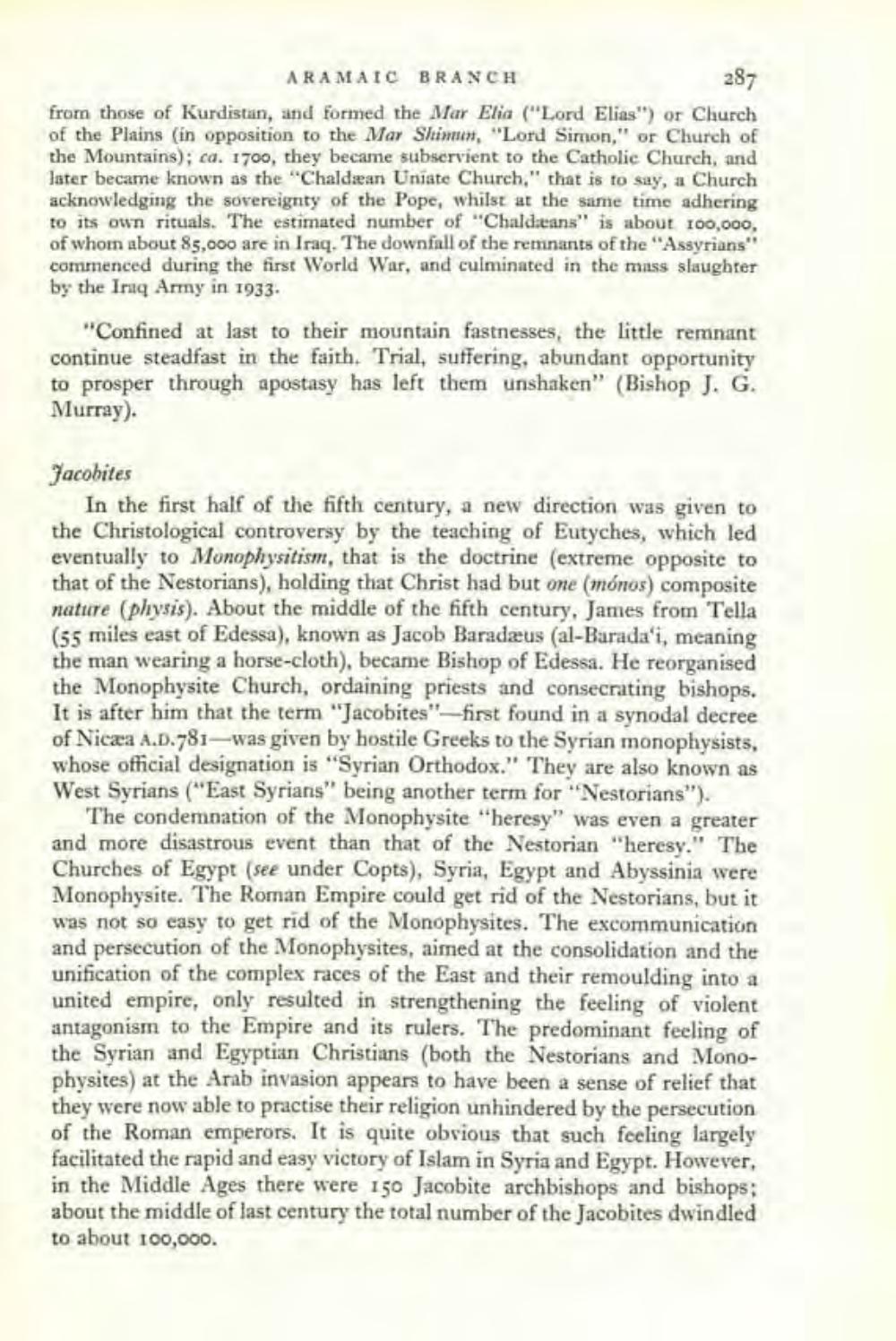________________
ARAMAIC BRANCH
287
from those of Kurdistan, and formed the Mar Elia ("Lord Elias") or Church of the Plains (in opposition to the Mar Shimun, "Lord Simon," or Church of the Mountains); ca. 1700, they became subservient to the Catholic Church, and later became known as the "Chaldæan Uniate Church," that is to say, a Church acknowledging the sovereignty of the Pope, whilst at the same time adhering to its own rituals. The estimated number of "Chaldeans" is about 100,000, of whom about 85,000 are in Iraq. The downfall of the remnants of the "Assyrians" commenced during the first World War, and culminated in the mass slaughter by the Iraq Army in 1933.
"Confined at last to their mountain fastnesses, the little remnant continue steadfast in the faith. Trial, suffering, abundant opportunity to prosper through apostasy has left them unshaken" (Bishop J. G. Murray).
Jacobites
In the first half of the fifth century, a new direction was given to the Christological controversy by the teaching of Eutyches, which led eventually to Monophysitism, that is the doctrine (extreme opposite to that of the Nestorians), holding that Christ had but one (mónos) composite nature (physis). About the middle of the fifth century, James from Tella (55 miles east of Edessa), known as Jacob Baradæus (al-Barada'i, meaning the man wearing a horse-cloth), became Bishop of Edessa. He reorganised the Monophysite Church, ordaining priests and consecrating bishops. It is after him that the term "Jacobites"-first found in a synodal decree of Nicæa A.D.781-was given by hostile Greeks to the Syrian monophysists, whose official designation is "Syrian Orthodox." They are also known as West Syrians ("East Syrians" being another term for "Nestorians").
The condemnation of the Monophysite "heresy" was even a greater and more disastrous event than that of the Nestorian "heresy." The Churches of Egypt (see under Copts), Syria, Egypt and Abyssinia were Monophysite. The Roman Empire could get rid of the Nestorians, but it was not so easy to get rid of the Monophysites. The excommunication and persecution of the Monophysites, aimed at the consolidation and the unification of the complex races of the East and their remoulding into a united empire, only resulted in strengthening the feeling of violent antagonism to the Empire and its rulers. The predominant feeling of the Syrian and Egyptian Christians (both the Nestorians and Monophysites) at the Arab invasion appears to have been a sense of relief that they were now able to practise their religion unhindered by the persecution of the Roman emperors. It is quite obvious that such feeling largely facilitated the rapid and easy victory of Islam in Syria and Egypt. However, in the Middle Ages there were 150 Jacobite archbishops and bishops; about the middle of last century the total number of the Jacobites dwindled to about 100,000.




